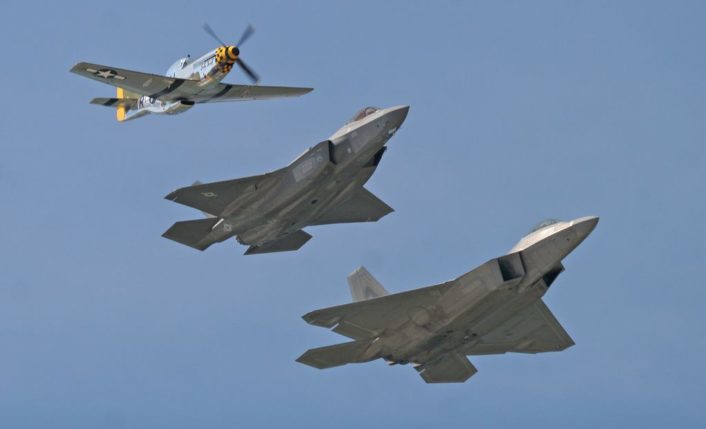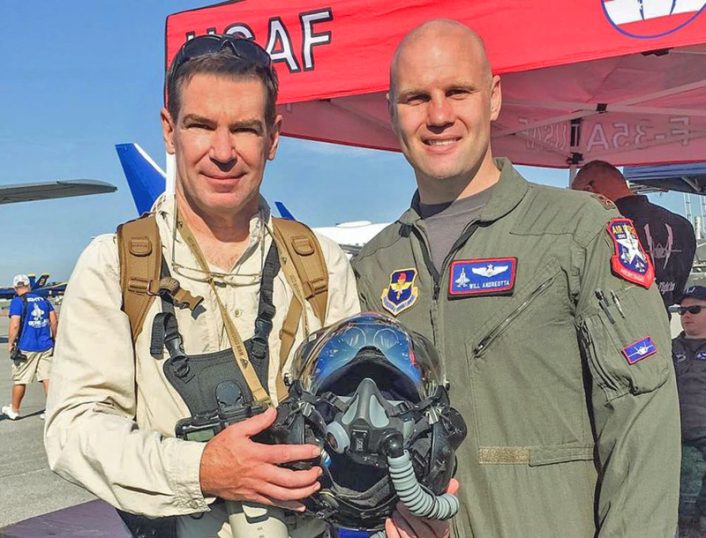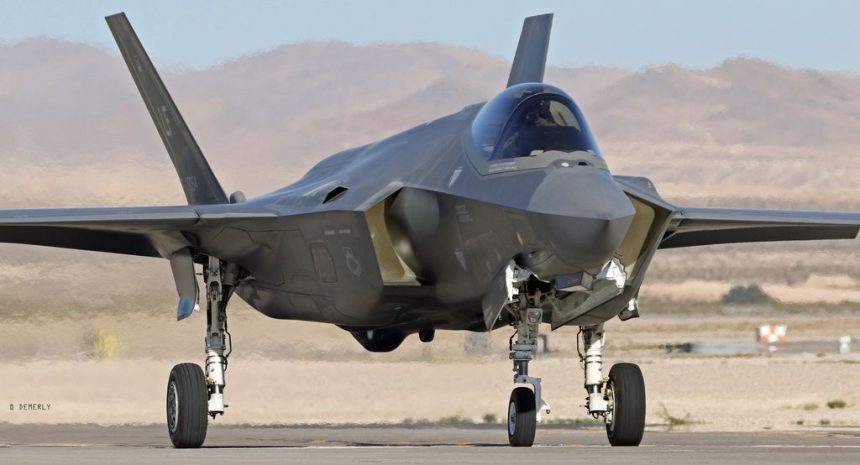Large Number of Air Force F-35As to Red Flag 17-1, Navy Works Through F-35C Launch Problem, Marines Continue to Lead in F-35B Integration.
January of 2017 has been a busy month for the ongoing integration of new Lockheed-Martin F-35 Lightning II Joint Strike Fighters into U.S. operational deployment with the U.S. Air Force and testing with the U.S. Navy.
Most recently the U.S. Air Force has deployed flight and maintenance crews of the 388th and 419th Fighter Wings from Hill AFB to Nellis Air Force Base, Nevada, on January 20, 2017 for Red Flag 17-1. The units are reportedly contributing an unprecedented total of thirteen F-35As to the exercise according to spotters on the ground outside Nellis.
The F-35As join twelve U.S. Air Force F-22 Raptors from the 149th Fighter Squadron of the Virginia Air National Guard 192nd Fighter Wing flying to Nevada from Joint Base Langley–Eustis, Virginia. This marks a significant exercise to utilize the interoperability of the F-35A with the F-22 as a unified force.

Col. David Lyons, 388th FW commander told official Air Force media, “Our Airmen are excited to bring the F-35 to a full-spectrum combat exercise. The Red Flag battle space is going to be a great place to leverage our stealth and interoperability. It’s a lethal platform and I’m confident we will prove to be an invaluable asset to the commander.”
The Red Flag deployment for Air Force F-35As is significant since it marks a major milestone in one of the aircraft’s primary roles, flying as an interoperable sensor and intelligence gathering platform in combination with other tactical aircraft. Maj. Jeffrey Falanga, director of operations for the 414th Combat Training Squadron that hosts Red Flag told media, “Red Flag is important because of what it provides,” Major Falanga went on to say, “(Red Flag) provides our training audience with a realistic environment enabling them to practice in all domains–air, ground, space, and cyber–and also to be able to practice interoperability with not only U.S., but joint and coalition forces. Which is important since we’ll operate with these forces in our next engagement.”
Last year the U.S. Marines deployed six F-35B Lightning II’s from Marine Fighter Attack Squadron 121 to Red Flag 16-3 in July-August 2016. The Marine F-35Bs have since been deployed to the western Pacific. This suggests the Marines have had the highest degree of success in integrating F-35s into an operational setting even though they fly the most complex version of the F-35, the “B” version with the STOVL (Short Take Off Vertical Landing) capability designed to operate from small assault carrier ships.
The year had a bumpy start, literally, for U.S. Navy F-35C tests and evaluation. In a Jan. 11, 2017 news story the Director of Operational Test and Evaluation (DOT&E) for the U.S. Navy’s F-35C program was quoted as reporting that, “Excessive vertical oscillations during catapult launches make the F-35C operationally unsuitable for carrier operations, according to fleet pilots.”
The problem that prompted the report is predominantly the result of the nose landing gear suspension settings and/or design according to AviationWeek.com. The nose landing gear is not adequately damping the strong vertical movement that results when the nose gear is released from the catapult launch apparatus at the end of the flight deck. The vertical oscillations were severe enough that pilots could not read flight-critical data on their instrument displays according the report. The oscillations caused most pilots to lock their seat harness during launch, which made emergency controls difficult for some pilots to reach. The test pilots deemed this situation “unacceptable and unsafe,” according the report portions published by AviationWeek.com.
During carrier launches the nosewheel suspension is compressed both by the tension of the catapult towbar and to a smaller degree by thrust applied when the pilot advances the throttle to take-off power settings. The front of the aircraft “squats” or assumes a slightly nose-downward angle of attack compared to when it is not attached to the catapult towbar for launch.
Once the catapult is fired and the hold-back behind the nose landing gear is released the aircraft begins its trip down the flight deck propelled by jet thrust from the engines and either by hydraulic, or on newer aircraft carriers, electromagnetic force through the catapult. At the end of the flight deck on the bow of the ship where the flight deck ends the towbar releases the nose landing gear and the nose of the aircraft rapidly rises, increasing angle of attack to facilitate optimal lift at the speed the aircraft is traveling when it reaches the edge of the deck. The amount of launch force used by the catapult is different for each launch depending on the gross take-off weight of the aircraft being launched. It varies with type, fuel load and payload.
The problems were reported during the latest round of sea trials on board the aircraft carrier USS George Washington (CVN-73). These latest reports conflict with earlier reports from sea trials onboard USS George Washington in August of 2015 when Cmdr. Ted “Dutch” Dyckman, a pilot with Strike Fighter Squadron 101, the “Grim Reapers”, told the Virginian-Pilot newspaper, “It’s just easy, It’s really easy to fly.”
Twelve U.S. Navy pilots operated the F-35C during earlier aircraft trials in 2016 aboard the George Washington from Strike Fighter Squadron 101, the “Grim Reapers”. The pilots were completing carrier qualifications as a continuing phase of the F-35C’s testing prior to operational deployment.
The Navy’s Patuxent River-based Air Test and Evaluation Squadron 23 is the unit that reported the take-off anomalies. Flight operations for the later phase of tests by Air Test and Evaluation Squadron 23 (VX-23), included taking off and landing with externally mounted simulated weapons and asymmetrical loading. These additional loads may be a factor in the outcome of the testing and the subsequent report.
While this is a negative report about U.S. Navy F-35C operations, the final version of the F-35 Joint Strike Fighter to enter U.S. service (The U.S. Marine F-35B and Air Force F-35A are already operational), it is a relatively minor potential defect in the program that will likely be corrected as a result of this finding.
Finally, in F-35 airshow news we learned in a phone conversation with Mark Thibeault, civilian contractor speaking about the U.S. Air Force Heritage Flight Team, that the team’s schedule will include “fourteen dates” in 2017. The final scheduling for the F-35 Heritage Flight Team will be completed within 2-3 weeks according the Thibeault.

Major Will Andreotta returns as the F-35A Heritage Flight pilot for 2017.
Image credit: Tom Demerly
















